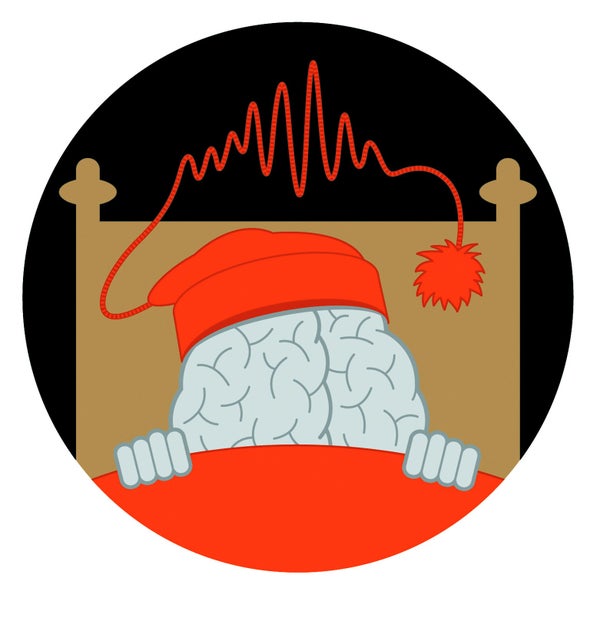Distinctive bursts of sleeping-brain activity, known as sleep spindles, have long been generally associated with strengthening recently formed memories. But new research has managed to link such surges to specific acts of learning while awake.
These electrical flurries, which can be observed as sharp spikes on an electroencephalogram (EEG), tend to happen in early sleep stages when brain activity is otherwise low. A study published in Current Biology shows that sleep spindles appear prominently in particular brain areas that had been active in study participants earlier, while they were awake and learning an assigned task. Stronger spindles in these areas correlated with better recall after sleep.
“We were able to link, within [each] participant, exactly the brain areas used for learning to spindle activity during sleep,” says University of Oxford cognitive neuroscientist Bernhard Staresina, senior author on the study. Staresina, Marit Petzka of the University of Birmingham in England and their colleagues devised a set of tasks they called the “memory arena,” which required each participant to memorize a sequence of images appearing inside a circle. While the subjects did so, researchers measured their brain activity with an EEG, which uses electrodes placed on the head. Participants then took a two-hour nap, after which they memorized a new image set—but then had to re-create the original image sequence learned before sleeping.
During naps, the researchers recorded stronger sleep spindles in the specific brain areas that had been active during the pre-sleep-memorization task, and these areas differed for each participant. This suggested that the spindle pattern was not “hardwired” in default parts of the human brain; rather it was tied to an individual's thought patterns. The researchers also observed that participants who experienced stronger sleep spindles in brain areas used during memorization did a better job re-creating the images' positions after the nap.
Previous research suggested spindles trigger brain changes that start the process of strengthening and refining a memory, in part by controlling the influx of calcium to certain cells. The new study is the first to directly measure brain activity during learning to support such a link and the first to associate better memory recall with stronger spindles in areas that had been active during learning, the researchers say—although they note it does not indicate whether spindles themselves actively improved recall. Staresina says that future work should examine spindle and other activity in the hippocampus, the brain's memory hub.
The study is “a convincing manuscript that supports the role of spindles in memory,” says Lourdes DelRosso, a sleep researcher and physician at the University of Washington and Seattle Children's Hospital, who was not involved in the work. She hopes scientists also investigate spindles in people with conditions that affect learning and attention, such as ADHD and dyslexia.

